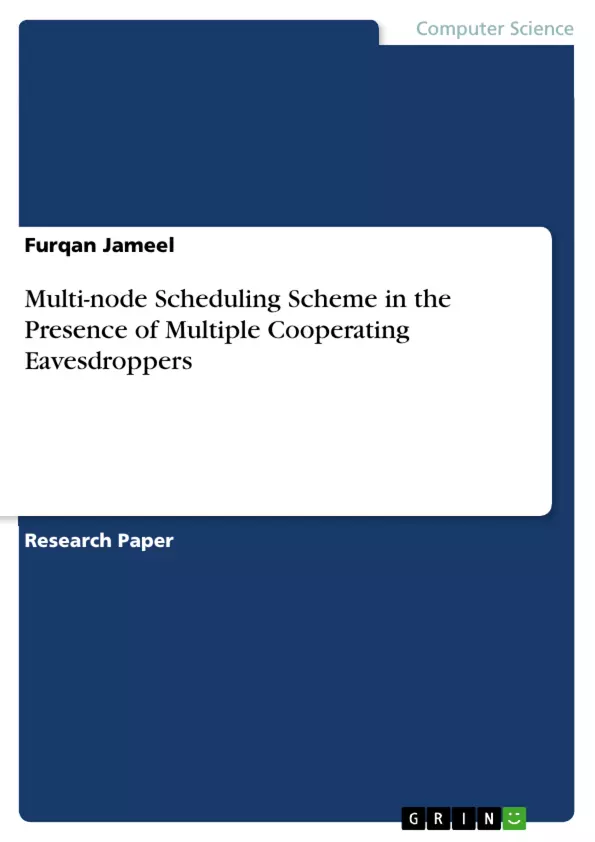The ability to achieve security at physical layer has remained a formidable task for the research community. The difficulty increases in case of multiple cooperating (i.e. exchanging and combining information) eavesdroppers. Therefore, in this article, we characterize the secrecy rate that can be achieved in the presence of cooperating eavesdroppers between a sink and multiple sensor nodes i.e. SISOME scenario.
We quantify how the cooperating eavesdroppers using MRC (Maximal-Ratio Combining) and SD (Selection Diversity) techniques make it challenging to secure information. We then propose a scheduling scheme where a sensor with highest secrecy capacity is scheduled to transmit data. The analysis of intercept probability and secrecy outage probability clearly shows that using the scheduling scheme helps to provide greater security without any additional hardware complexity or power cost.
Frequently asked questions
What is the main topic of this document?
This document discusses physical layer security in wireless sensor networks (WSNs), focusing on intercept probability in the presence of cooperating eavesdroppers.
What problem is the paper trying to address?
The paper addresses the challenge of securing wireless communication in WSNs, which are vulnerable to eavesdropping attacks. Traditional cryptographic techniques are often unsuitable due to their hardware and energy requirements.
What approach does the paper propose to improve security?
The paper proposes an optimal multi-node scheduling scheme where the sensor node with the highest secrecy capacity is selected for transmitting data. This is done without requiring channel state information (CSI) of the eavesdroppers.
How does the proposed scheme differ from traditional methods like round-robin scheduling?
Unlike round-robin scheduling where each sensor transmits in turn, the proposed scheme dynamically selects the sensor with the best secrecy capacity, enhancing security against eavesdropping.
What are the key contributions of this paper?
The key contributions include: probabilistic characterization of secrecy capacity with cooperating eavesdroppers, a multi-node scheduling scheme based on secrecy capacity, derivation of intercept probability expressions, and numerical results demonstrating improved security compared to round-robin scheduling.
What is the system model assumed in the paper?
The system model consists of a sink node, multiple sensor nodes (N), and multiple cooperating eavesdroppers (M), all with single antennas. The channels are modeled using Rayleigh fading.
What are MRC and SD techniques in the context of this paper?
MRC (Maximal-Ratio Combining) and SD (Selection Diversity) are techniques used by eavesdroppers to combine signals received from multiple sensors, making it more challenging to secure information. The paper analyzes the impact of both techniques.
What is intercept probability and why is it important?
Intercept probability is the probability that an eavesdropper can successfully decode the message transmitted by a sensor. It's crucial for assessing the security of the wireless communication system.
What is secrecy capacity?
Secrecy capacity is the difference between the capacity of the main channel (sensor to sink) and the wiretap channel (sensor to eavesdropper). It represents the rate at which information can be reliably transmitted without the eavesdropper being able to decode it.
What are some of the future research directions mentioned in the paper?
Future research directions include extending the analysis to MIMO systems with multiple antennas, and considering Quality of Service (QoS) requirements for sensor nodes.
What are some key mathematical expressions used in the paper?
The paper contains formulas for PDF of Instantaneous SNR, Channel Capacity, Intercept Probability, MRC eavesdropper and SD Eavesdropper
- Quote paper
- Furqan Jameel (Author), 2016, Multi-node Scheduling Scheme in the Presence of Multiple Cooperating Eavesdroppers, Munich, GRIN Verlag, https://www.hausarbeiten.de/document/337120


